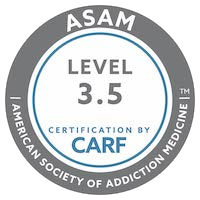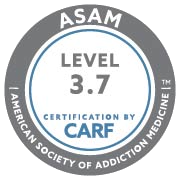
Alcohol misuse continues to be a major public health crisis in the United States, contributing significantly to preventable deaths and economic losses. Recent data from 2021 to 2024 show that alcohol misuse accounts for over 140,000 deaths annually and has resulted in nearly 3.6 million years of potential life lost each year. The economic toll is staggering, with alcohol-related healthcare costs and lost productivity estimated to be in the hundreds of billions of dollars annually.
Despite the growing awareness of Alcohol Use Disorder (AUD) and the availability of effective treatments, the use of medications for AUD remains surprisingly low.
Treatment Options for AUD
For individuals suffering from AUD, treatment options include behavioral interventions and pharmacotherapy. There are three FDA-approved medications commonly used to treat AUD: naltrexone, acamprosate, and disulfiram. Each of these drugs works differently, but they share a common goal—reducing alcohol cravings and preventing relapse.
Disulfiram, for example, creates unpleasant physical reactions when alcohol is consumed, making it useful in controlled or supervised settings. Naltrexone and acamprosate, however, target the brain’s reward pathways to reduce cravings and heavy drinking episodes. Studies from the last few years have shown that these medications can be highly effective. For instance, data suggest that roughly 11 patients need to be treated with acamprosate to prevent one from relapsing, and about 18 need to be treated with naltrexone for similar results.
Despite the proven effectiveness of these medications, a 2021 study revealed that only 2% of individuals with AUD received pharmacotherapy. This gap in treatment is particularly concerning because hospitalizations for alcohol-related conditions provide critical opportunities to initiate treatment.
Missed Opportunities in Hospitals
A 2022 study found that hospitalizations for alcohol-related issues offer a key opportunity to start treatment, yet medication is rarely prescribed during these critical moments. Out of nearly 30,000 Medicare beneficiaries hospitalized for alcohol-related conditions in 2021, only 1% received a prescription for naltrexone, acamprosate, or disulfiram within the first month after discharge. This missed opportunity is indicative of a broader challenge in treating AUD.
Moreover, a population-based study in 2023 revealed that patients who received medications for AUD following an alcohol-related hospitalization had a 42% lower risk of readmission or death within the first month post-discharge. The study found that just six patients needed to fill a prescription to prevent one readmission or emergency room visit, highlighting the significant potential of these treatments.
Barriers to Medication Use
There are several barriers that continue to hinder the widespread use of medications for AUD. A 2023 mixed-methods study identified three main issues: lack of knowledge among prescribers, concerns about the safety of these medications, and the persistent stigma surrounding alcohol use.
Many healthcare providers still feel hesitant to prescribe medications for AUD, often due to misconceptions about their safety or a belief that patients must first demonstrate a commitment to abstinence before treatment can begin. This cautious approach may prevent many individuals from accessing life-saving treatments when they are most vulnerable, particularly during or following hospitalization.
Additionally, structural barriers within the healthcare system contribute to the low rates of medication use. A 2022 study revealed that many clinicians prefer to initiate medication in outpatient settings, missing opportunities to engage patients during hospital stays. Patients, in turn, may not be aware of their options, or they may face stigma when seeking help for alcohol-related issues.
Improving Access to Treatment
Despite these challenges, there are promising initiatives aimed at increasing the use of medications for AUD. For example, in 2023, the Department of Veterans Affairs launched a campaign to educate clinicians about AUD treatments and increase prescribing rates. The campaign led to a noticeable uptick in the use of medications like naltrexone and acamprosate among veterans.
Similarly, hospitals that have implemented discharge protocols for prescribing medications to patients with AUD have seen improved outcomes. A 2022 study demonstrated that when hospitals included MAUD prescribing in their discharge processes, the number of patients receiving treatment significantly increased.
A New Perspective on AUD
To close the treatment gap, we need to change how we think about AUD. This disorder should be viewed and treated as a chronic condition, much like diabetes or hypertension. Current data suggest that medication-assisted treatment is dramatically underused, despite the clear evidence of its benefits.
From 2021 to 2024, the underutilization of pharmacotherapy for AUD has been both a sobering reality and a massive missed opportunity. Addressing structural barriers, educating clinicians, and reducing the stigma associated with alcohol use are key steps toward improving the care of individuals with AUD. By seizing opportunities to engage patients during hospitalization and integrating medications into standard care, we can significantly improve treatment outcomes and reduce the long-term impacts of alcohol misuse.
The recent data from 2021 to 2024 underscore the need for a more proactive approach to treating Alcohol Use Disorder. The consistent underutilization of medications for AUD reveals a critical gap in the healthcare system, but also a significant opportunity to better serve patients. By addressing both structural and societal barriers, we can ensure that more individuals receive the treatment they need, reducing preventable deaths and improving quality of life for millions of people across the country.
For adults battling AUD and substance addiction, Hathaway Recovery provides a lifeline of hope and transformation. Their comprehensive, individualized approach to treatment addresses not only the physical challenges of AUD but also the emotional, mental, and social complexities that accompany it. Recognizing that recovery is a unique journey for each individual, Hathaway Recovery offers tailored programs to meet the specific needs of their clients. From detoxification and therapeutic interventions to long-term aftercare planning, their range of services supports every phase of recovery. With a dedicated team of compassionate professionals, Hathaway Recovery is committed to helping individuals restore their health, rebuild their lives, and regain a sense of purpose and well-being.






